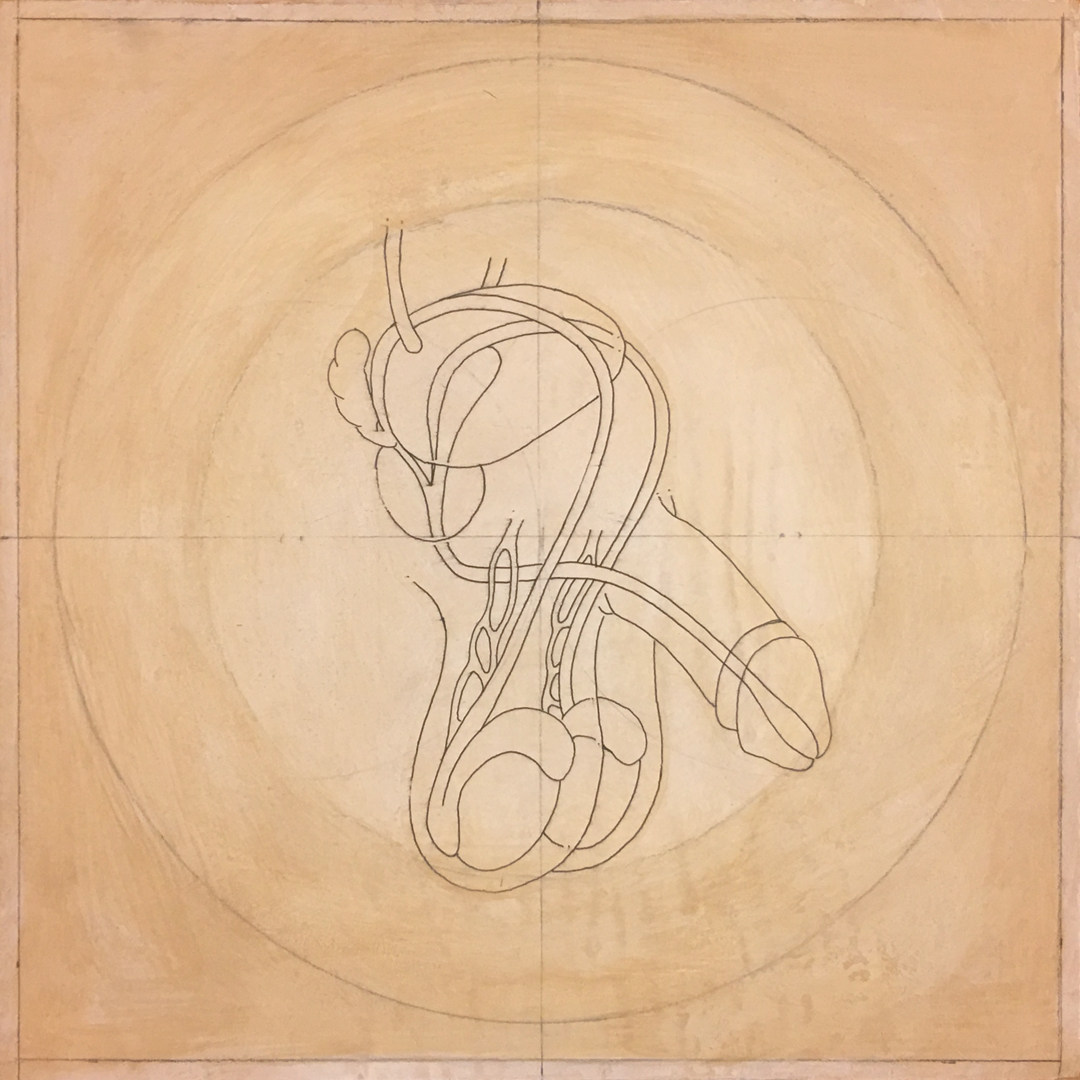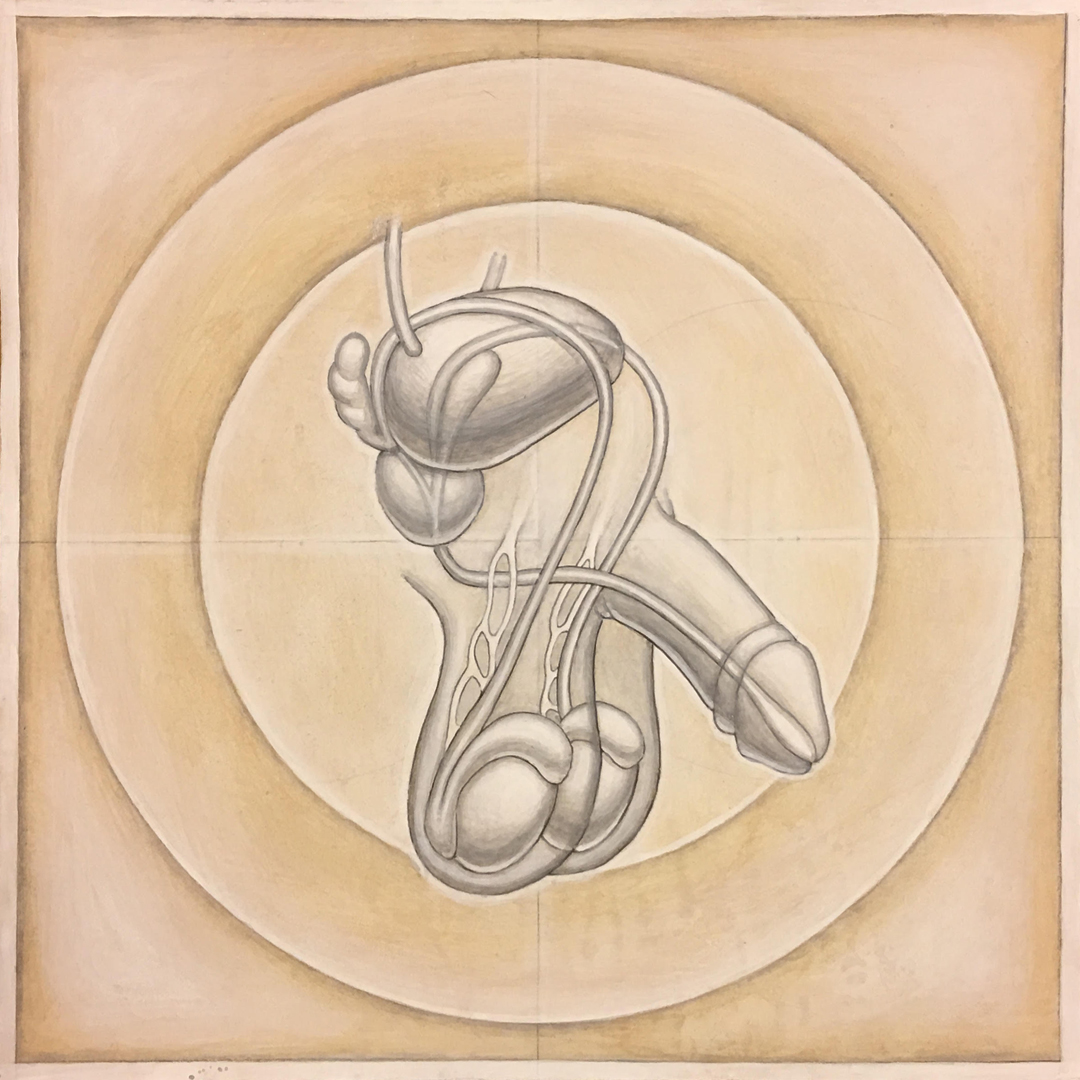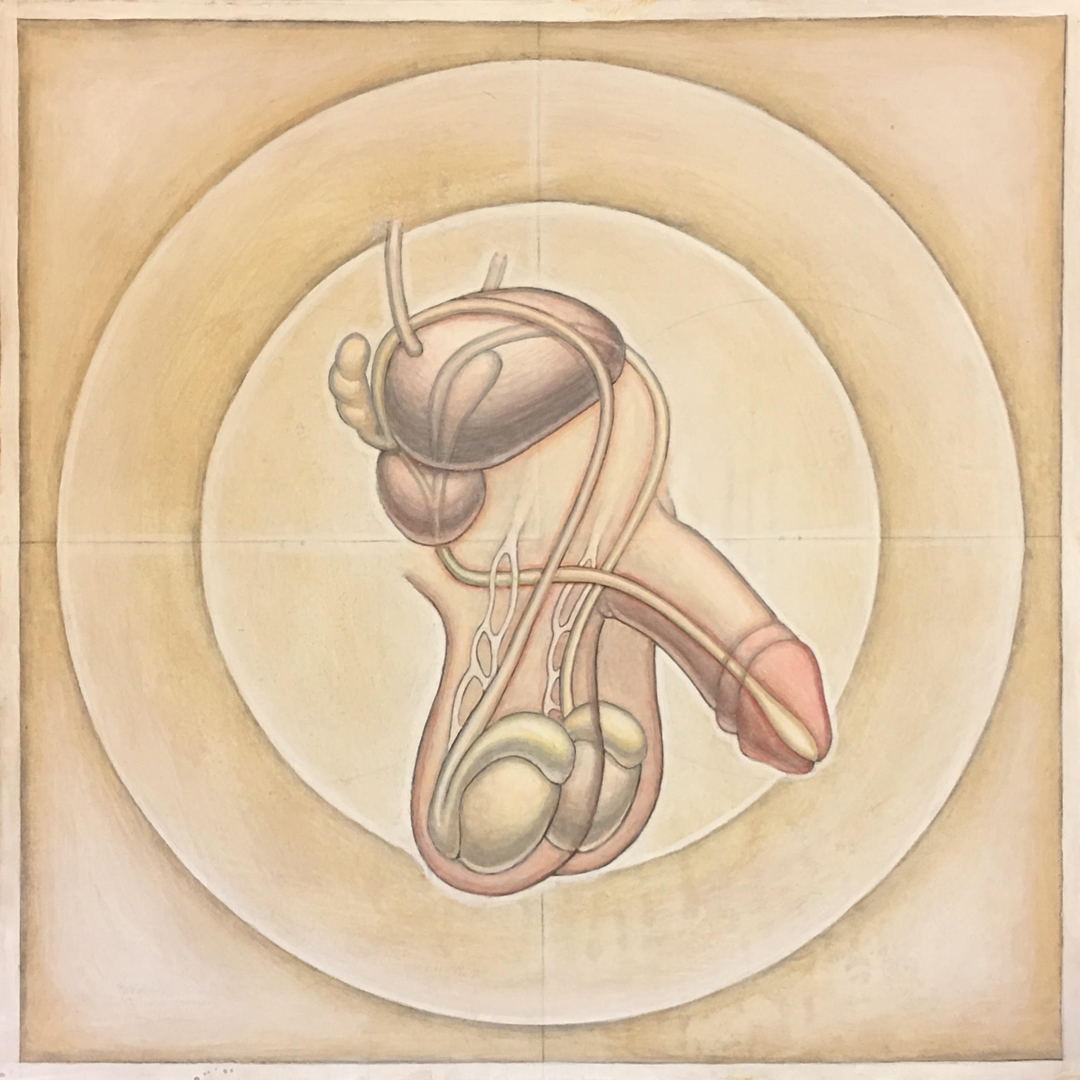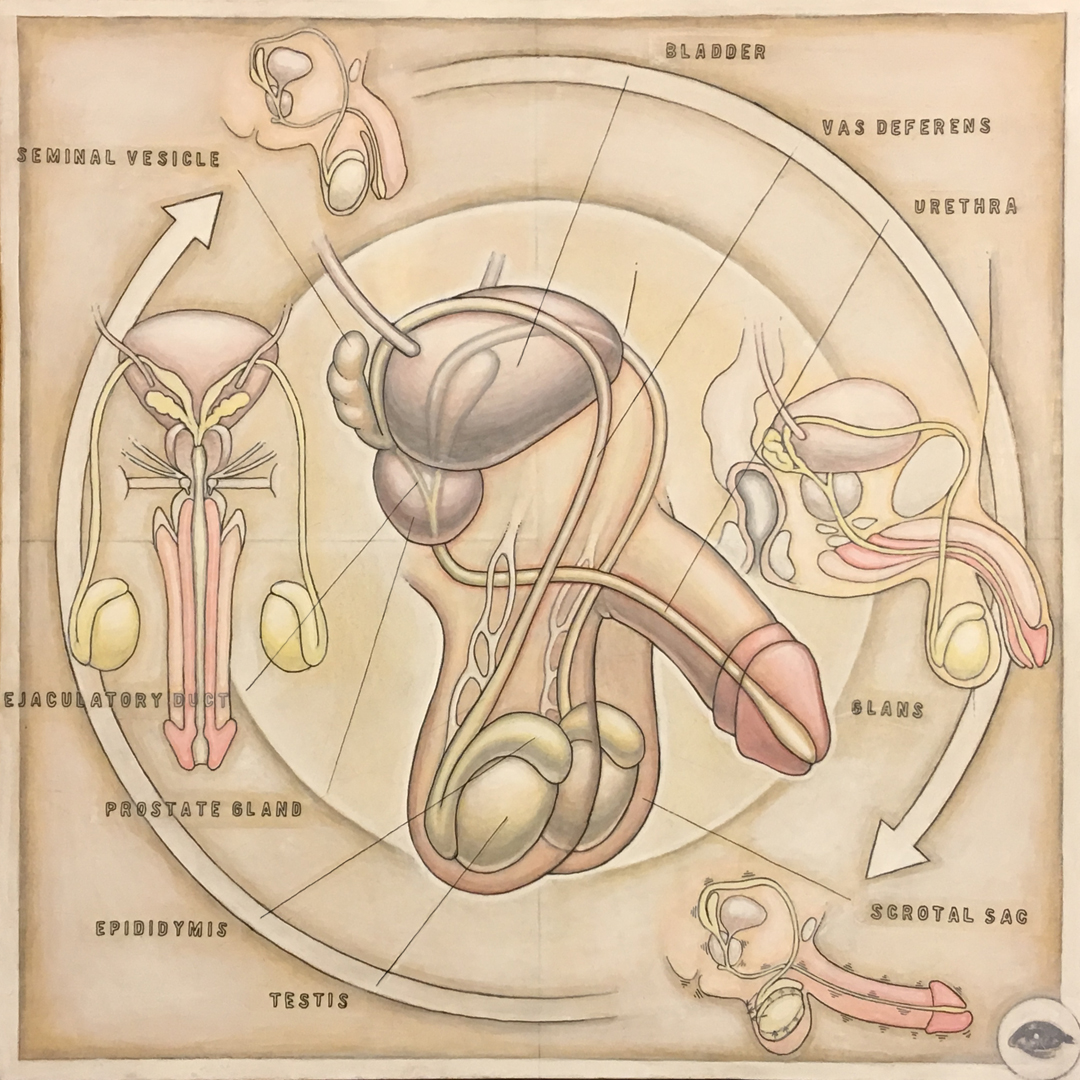new painting available :






" . . .When the usually flaccid penis becomes engorged with blood at the instant of erotic excitement, filling the corpus cavernosa (erectile tissue) that runs along the dorsal length and the corpus spongiosum that forms the ventral shaft and urethral passage, it takes on the ithyphallic form that is worshipped as a numinosum. Seed-bearer, penetrator, begetter, the phallus was also wonderful for its association with not one, but two sacred fluids--golden urine and the semen of life. Representations of the phallus are extremely ancient. Human beings were making stone phalli almost 28,00 years ago. Ithyphallic figures were etched on cave walls such as that at Lascaux, France, as early as 17,000 B.C.E. The phallus and the ithyphallic god or divine shaman were often identified with the sun and its far-reaching rays, and with the crescent moon as the Bull, the Horned God or the cup into which the divine semen was poured. The serpent rearing up, the bird in ascent, the vigorous bull, lion, horse, cock, and goat, the proliferating, elongated fish are all vehicles and animal forms of the phallic god. The primordial mound, or omphalos, or upright stone, the pillar, herm and obelisk, and the plow that enters and fertilizes the earth are images of the phallus. The ancient Lord of Animals or Lord of Plants personify it. So do spermatic deities of logos, creativity, virility, fire, lightning, anger, and lust.
And, to be sure, the phallus is also the violence of the creative impulse and 'the sudden, obsessive invasion that plucks away the flower of thought'. . .The brutal violating aspect of the phallus is manifest in the rape of the individual, in the rape of the earth. Phallic power can shatter, uproot, and lay waste. There are interior forms of coercive penetration, like self-destructive compulsions and invasive thoughts ; or intellectual or religious transfixion, where the phallic presence overwhelms its vessel. . . "
- _The Book of Symbols : Reflections on Archetypal Images_ (02010)
